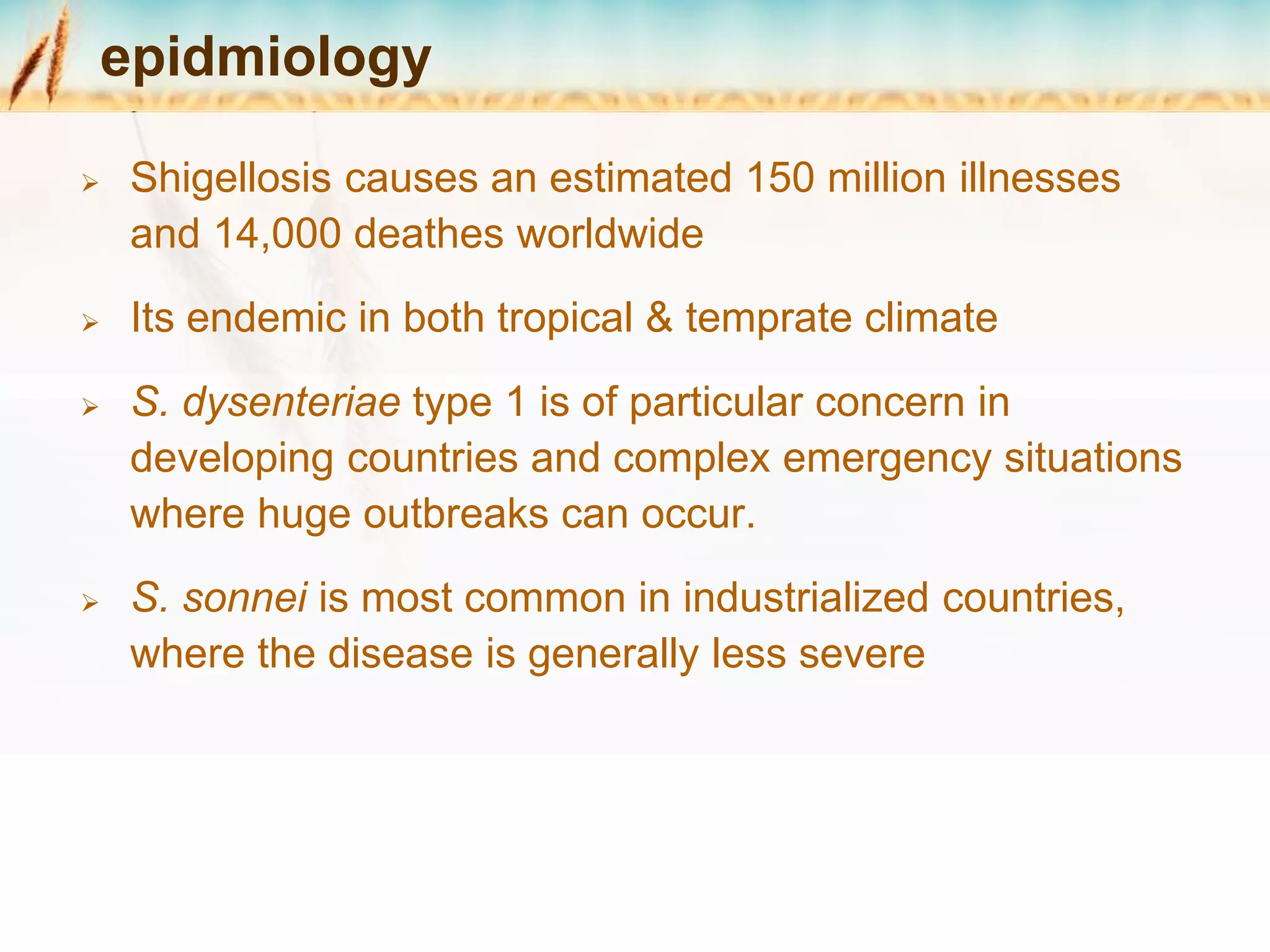Bacillary dysentery, primarily caused by the Shigella bacteria, leads to severe diarrhea and can result in significant morbidity and mortality, especially in developing countries. It is transmitted mainly through the fecal-oral route, with symptoms including painful diarrhea, fever, and potential complications such as sepsis and hemolytic uremic syndrome. Diagnosis involves isolation of Shigella from stool samples, and management focuses on hydration and appropriate antibiotic therapy, with prevention relying on hygiene education and sanitation measures.





















